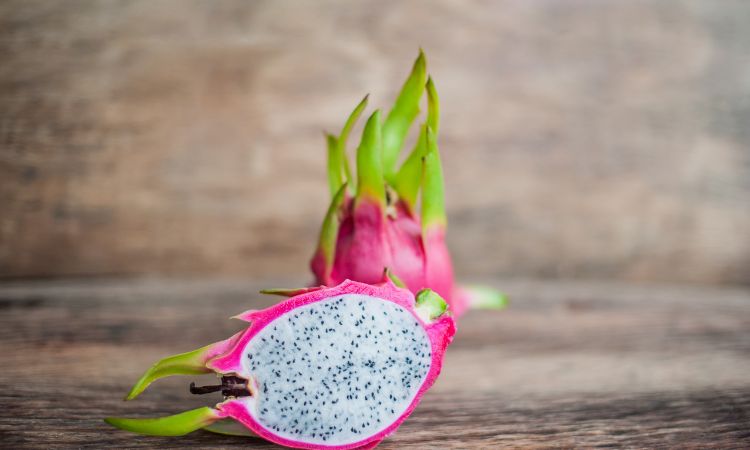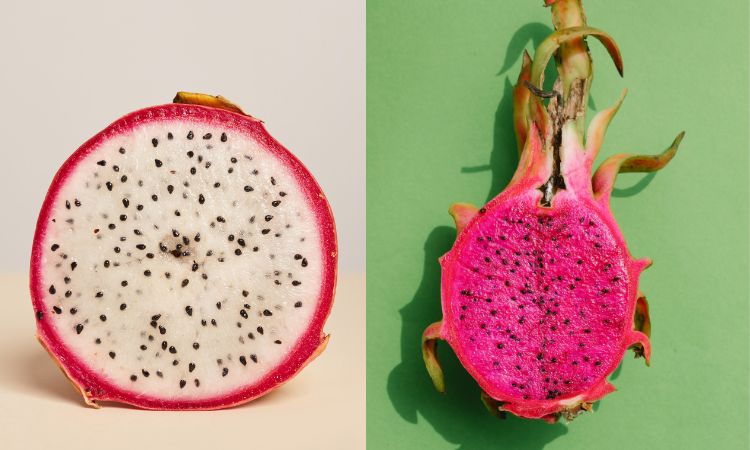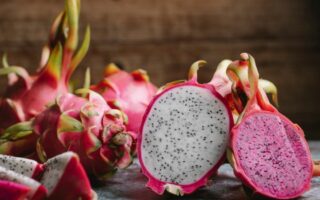Dragon fruit, also known as pitaya, has gained significant popularity in recent years due to its striking appearance and potential health benefits. This tropical fruit comes in two main varieties: red and white. While both varieties share similarities, they also have distinct characteristics, flavors, and culinary uses.
In this article, we will delve into the world of red and white dragon fruit, comparing their appearance, flavor profiles, nutritional content, health benefits, and culinary applications. By the end, you’ll have a deeper understanding of these unique fruits and be able to make an informed choice when encountering them.
Characteristics of Red Dragon Fruit:

Red dragon fruit boasts vibrant hues of red or magenta, which immediately catch the eye. Its outer skin is covered in scales or spikes, adding to its exotic appeal. In terms of size, red dragon fruit can vary, with some being smaller and others larger. When you cut open a red dragon fruit, you’ll find its white flesh studded with tiny black seeds.
Characteristics of White Dragon Fruit:

Contrasting with the vivid red variety, white dragon fruit sports a lighter appearance. Its outer skin is usually white or yellow, and it tends to have a smoother texture compared to the red variety. Similar to its counterpart, white dragon fruit also comes in various sizes. When you slice open a white dragon fruit, you’ll discover the same white flesh adorned with small black seeds.
Also Read – When Are Dragon Fruit in Season?
Red vs. White Dragon Fruit: Factors to Compare

Appearance:
In terms of appearance, red dragon fruit stands out with its vibrant and eye-catching colors, making it visually appealing, especially when used as a garnish or in vibrant fruit salads. On the other hand, white dragon fruit exhibits a more subtle and elegant appearance, making it a versatile choice for various culinary presentations.
Flavor and Taste:
When it comes to flavor, both red and white dragon fruit offer unique taste profiles. Red dragon fruit tends to have a mild sweetness with a hint of acidity, providing a refreshing and enjoyable eating experience. In contrast, white dragon fruit offers a subtly sweet flavor with a delicate floral undertone, providing a more delicate and nuanced taste.
Nutrition:
In terms of nutritional content, both red and white dragon fruit offer impressive health benefits. Both varieties are low in calories and rich in essential nutrients. Red dragon fruit is known for its high antioxidant content, which helps combat free radicals and offers potential health benefits, including anti-inflammatory properties. It is also a good source of vitamin C and dietary fiber. Similarly, white dragon fruit is packed with hydration due to its high water content. It contains beneficial plant compounds and offers vitamin C and fiber as well.
Health Benefits:
Red and white dragon fruit share many health benefits due to their similar nutritional profiles. Both varieties provide support for digestion, boost immune function, and offer antioxidant protection. The high fiber content aids in healthy digestion and promotes satiety.
Additionally, the vitamin C content in both varieties contributes to immune support and collagen synthesis. While the red variety boasts higher antioxidant levels, both varieties are valuable additions to a balanced diet.
Culinary Uses:
Both red and white dragon fruit offers endless possibilities when it comes to culinary applications. Red dragon fruit’s vibrant color makes it an ideal ingredient for visually appealing smoothie bowls, fruit salads, desserts, and refreshing beverages.
Its striking appearance can enhance the visual appeal of various culinary creations. White dragon fruit, with its more subtle hue, lends itself well to elegant desserts, light fruit salads, and delicate flavor pairings. Its versatility allows it to be used in both sweet and savory dishes, adding a touch of uniqueness to recipes.
Uses:
Both red and white dragon fruit can be enjoyed in various forms. Their refreshing nature makes them excellent candidates for smoothies, juices, and cocktails. The mild sweetness and unique textures make them a delightful addition to fruit salads, yogurt bowls, and ice creams. Their flesh can also be scooped out and enjoyed as is for a quick and healthy snack.
Availability and Growing Conditions:
The availability and growing conditions of red and white dragon fruit vary. Red dragon fruit is commonly cultivated in regions with a tropical climate, such as Southeast Asia and parts of Central and South America.
White dragon fruit, on the other hand, thrives in similar tropical climates but is also found in regions like Australia and certain parts of the United States. Both varieties can be found in markets worldwide, although the red variety may be more prevalent.
Which is Better: Red or White Dragon Fruit?
Determining which dragon fruit variety is better ultimately depends on personal preferences. If you’re drawn to vibrant colors and a slightly more pronounced flavor, red dragon fruit may be your preferred choice.
On the other hand, if you appreciate a more delicate taste and a versatile appearance, white dragon fruit might be the one for you. Experimenting with both varieties allows you to explore their unique qualities and discover your personal favorite.
Does Red and White Dragon Fruit Taste the Same?
While both red and white dragon fruit belongs to the same fruit family, they do have subtle taste differences. Red dragon fruit tends to be slightly sweeter with a mild acidity, offering a refreshing and tangy flavor profile. In contrast, white dragon fruit provides a milder and subtly sweet taste with a delicate floral undertone. Both varieties are delicious in their own right and offer a delightful eating experience.
Also Read – Gala vs. Fuji Apples: Exploring the Differences and Delights
Conclusion:
In conclusion, red and white dragon fruit may share the same family name, but they have distinct characteristics that set them apart. From their appearance and flavor profiles to their nutritional content and culinary uses, each variety offers its own unique qualities.
Whether you prefer the vibrant and bold nature of red dragon fruit or the delicate elegance of white dragon fruit, both varieties provide a healthy and delightful addition to your diet. So, the next time you encounter these captivating fruits, savor the opportunity to explore their differences and enjoy the rich flavors they have to offer.




